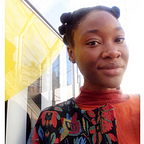Talented and skilled artists, technicians, craft makers, designers take their ideas and everyday sensitivities of the world we inhabit and create… art.
And whilst industrial machines and computer design software such as photoshop and procreate to name a few help the process of innovative art forms, we still need to be diligent and realistic, not how art is created but how we define an artist. Today Algorithmic data is being introduced more into the creative arena as Algorithmic Art by the artist, generative adversarial network (GAN).
From a young child we are encourage to take our time, cultivate, discipline and nurture our interests in order to master something great. In the case of exploring materiality, its to develop ones artistic capabilities through our biological senses. To touch, see, hear and taste, discovering how crumple paper can take a collage form, the rubbing sensation of pastel colours or the actions of shaping a bust with a ribbon tool. Therefore if we start acknowledging GAN as the artist of making art work, we are initiating and influencing the disregard towards human life, our existence.
A human-being practicing creativity produces emotive sensitivities and will continue to evoke feelings and longevity. Feelings in art last because humans are alive or were alive to experience whatever needed to be expressed visually. And while Algorithmic art is clever its without emotions. Art brings feelings of romance, individuality, freedom, longevity and so much more. You might think what about that installation art stuff? How is that emotive? There is still no difference with installation, experimental, performance art because the artist(s) are present and allow full connection to a viewer.
…And while Algorithmic art is clever its without emotions
I remember in 2012 I was invited (one out of many exhibitions and private viewings) to view LuckyPDF at Frieze Art Fair London, where a group of artist with creative ideas make expressive decisions in the work as they go along. Their process is through TV and film formats showing an audience a more fascinating and involved experience with the art. I understood that their physical participation as artists alongside technology, allows a new way of art to be displayed. A viewer is able to have a more physical human experience with the art due to the artist presence, developing the understanding of the art context at hand.
More importantly if we think about the various eras globally in art history, will AI have permission to recreate these significant historical experiences and subjectivity in art?
For instance Post Modern Black art created by African, Caribbean Indian, Latino, Cuban artists artwork has come a long way to establish itself as a truthful positive aesthetic. To now be represented as notable alongside other successful artists to date, because of the severe past of western imperialism and white racisms negative commercial and visual art portrayals of black representational art. Artist Henry Ossawa Tanner art discipline was impressionisim and realist style oil paintings like “The Banjo Lesson” (1893) it captured the beginning of the breakthrough of the new way of seeing and embracing the positivity of African America people.
His soft, comforting dim-lit, humbled but powerful brush strokes form a detail imagery of an older black man with a young boy child teaching him how to play a banjo.
What would AI have experienced to create such tactile and experiential work like the artist Tanner? Does AI have any right in doing so?
However AI does have other benefits with art, such as reducing fakes artworks and certificates of authenticity, due to sophisticated digital data gathered and logged. The system can swiftly asses compare and capture images of disingenuous artwork objects and antiques. Therefore cutting down police resources and criminal lawyers services as first point of contact.
Combining AI and art is still being explored and although it has a minute pool of big time art buyers, investing in finding an audience is scarce. Other niche creative digital areas e.g Youtube and the likes of BeautyCon has it own successful convention and exhibition days with a heavy dedicated targeted audience. But my point is YouTube is not forcing itself to be defined as film and celebrated like the Oscars. (and I am confident the Oscars wont be offically accepting them in that arena any time soon or later)
I believe Algorithmic art can be among contemporary art as an additional digital medium, but let’s appreciate, and recognise the human- being as the artist of the brush stroke.
